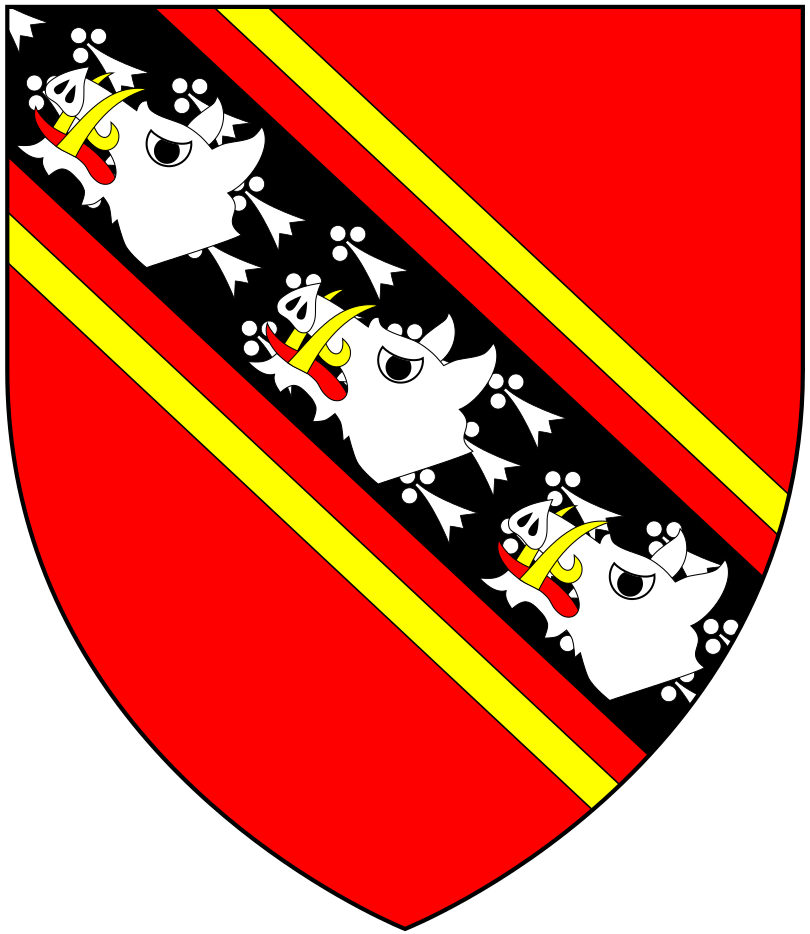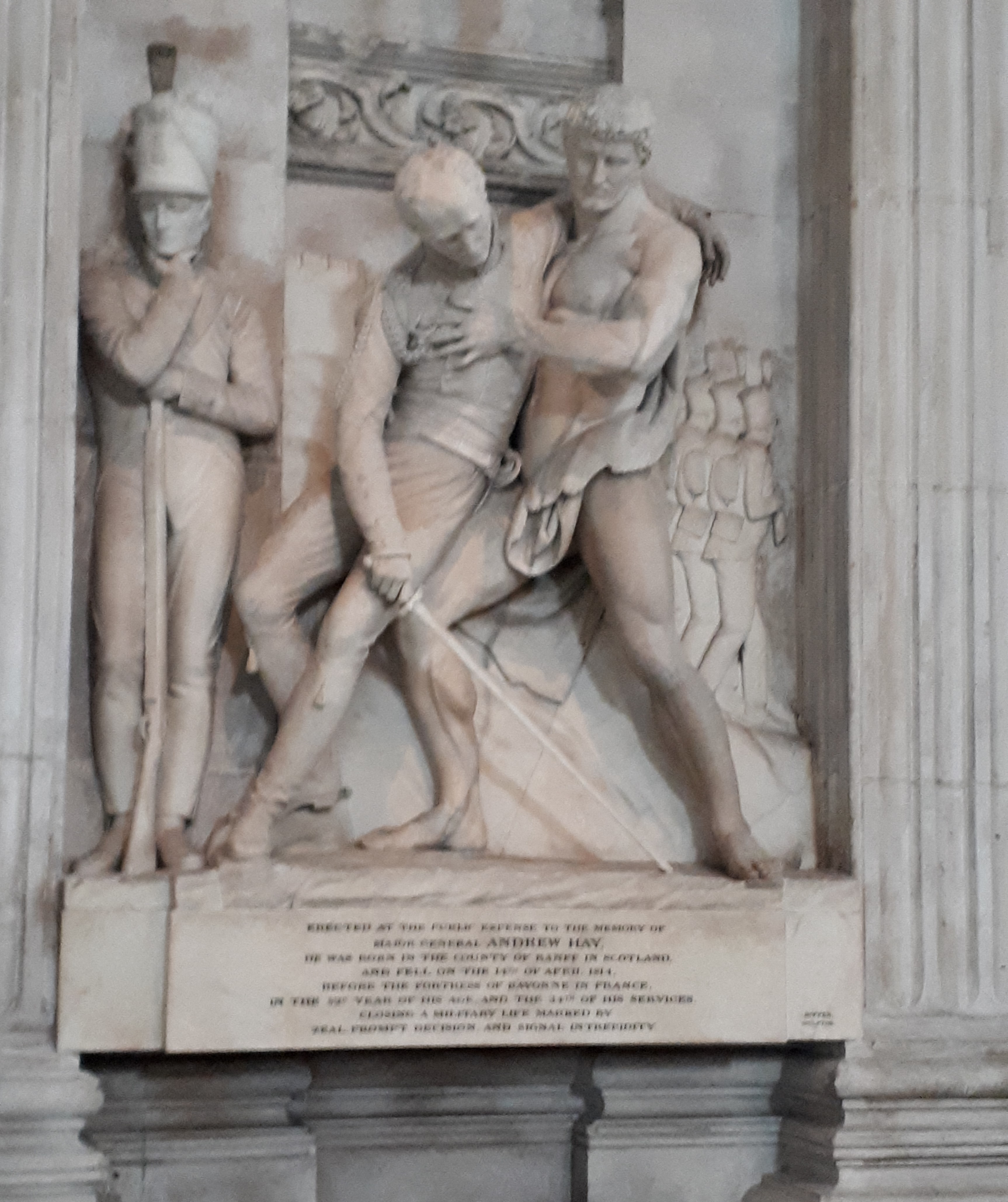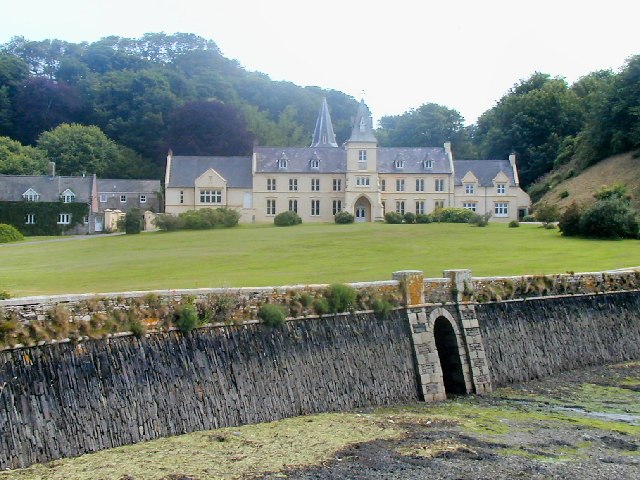|
Richard Spry
Rear-Admiral Sir Richard Spry (1715– 25 November 1775) was a Royal Navy officer who served as Commander-in-Chief, North American Station. Naval career After an education at Truro Grammar School Spry joined the Royal Navy as a volunteer in 1733. Following the sinking of his ship by the Spanish Navy he was taken prisoner in 1745 but released two months later. He took part in the siege of Pondicherry in India in 1750. From 17 October 1753 to 5 June 1754 he was captain of the frigate . In 1755 he became senior officer at Halifax, Nova Scotia, and in 1758 took part in the successful Siege of Louisbourg. He was given command of in 1760. In 1762 he was appointed Commander-in-Chief, North American Station. In 1766 he was promoted to the rank of Commodore and appointed Commander-in-Chief, Mediterranean Station.Hardy 1783, p. 56 Spry returned to England in 1769. In 1770 he was promoted to rear admiral and went on to be Port Admiral at Plymouth in 1771. Spry was knighted at ... [...More Info...] [...Related Items...] OR: [Wikipedia] [Google] [Baidu] |
Place House, St Anthony In Roseland
Place may refer to: Geography * Place (United States Census Bureau), defined as any concentration of population ** Census-designated place, a populated area lacking its own Municipality, municipal government * "Place", a type of street or road name ** Often implies a dead end (street) or cul-de-sac * Place, based on the Cornish word Plas (other), "plas" meaning mansion * Place, a populated place, an area of human settlement ** Incorporated town, Incorporated place (see municipal corporation), a populated area with its own municipal government * Location (geography), an area with definite or indefinite boundaries or a portion of space which has a name in an area Placenames * Placé, a commune in Pays de la Loire, Paris, France * Plače, a small settlement in Slovenia * Place (Mysia), a town of ancient Mysia, Anatolia, now in Turkey * Place, New Hampshire, a location in the United States * Place House, a 16th-century mansion largely remodelled in the 19th century, in Fow ... [...More Info...] [...Related Items...] OR: [Wikipedia] [Google] [Baidu] |
Halifax, Nova Scotia
Halifax is the capital and largest municipality of the Canadian province of Nova Scotia, and the largest municipality in Atlantic Canada. As of the 2021 Census, the municipal population was 439,819, with 348,634 people in its urban area. The regional municipality consists of four former municipalities that were amalgamated in 1996: Halifax, Dartmouth, Bedford, and Halifax County. Halifax is a major economic centre in Atlantic Canada, with a large concentration of government services and private sector companies. Major employers and economic generators include the Department of National Defence, Dalhousie University, Nova Scotia Health Authority, Saint Mary's University, the Halifax Shipyard, various levels of government, and the Port of Halifax. Agriculture, fishing, mining, forestry, and natural gas extraction are major resource industries found in the rural areas of the municipality. History Halifax is located within ''Miꞌkmaꞌki'' the traditional ancestral lands ... [...More Info...] [...Related Items...] OR: [Wikipedia] [Google] [Baidu] |
1775 Deaths
Events Summary The American Revolutionary War began this year, with the first military engagement being the April 19 Battles of Lexington and Concord on the day after Paul Revere's now-legendary ride. The Second Continental Congress takes various steps toward organizing an American government, appointing George Washington commander-in-chief (June 14), Benjamin Franklin postmaster general (July 26) and creating a Continental Navy (October 13) and a Marine force (November 10) as landing troops for it, but as yet the 13 colonies have not declared independence, and both the British (June 12) and American (July 15) governments make laws. On July 6, Congress issues the Declaration of the Causes and Necessity of Taking Up Arms and on August 23, King George III of Great Britain declares the American colonies in rebellion, announcing it to Parliament on November 10. On June 17, two months into the colonial siege of Boston, at the Battle of Bunker Hill, just north of Boston, Bri ... [...More Info...] [...Related Items...] OR: [Wikipedia] [Google] [Baidu] |
1715 Births
Events For dates within Great Britain and the British Empire, as well as in the Russian Empire, the "old style" Julian calendar was used in 1715, and can be converted to the "new style" Gregorian calendar (adopted in the British Empire in 1752 and in Russia in 1923) by adding 11 days. January–March * January 13 – A fire in London, described by some as the worst since the Great Fire of London (1666) almost 50 years earlier, starts on Thames Street when fireworks prematurely explode "in the house of Mr. Walker, an oil man"; more than 100 houses are consumed in the blaze, which continues over to Tower Street before it is controlled. * January 22 – Voting begins for the British House of Commons and continues for the next 46 days in different constituencies on different days. * February 11 – Tuscarora War: The Tuscarora and their allies sign a peace treaty with the Province of North Carolina, and agree to move to a reservation near Lake Mattamusk ... [...More Info...] [...Related Items...] OR: [Wikipedia] [Google] [Baidu] |
John Amherst
Admiral John Amherst (1718 – 14 February 1778) was a Royal Navy officer served during the First Carnatic War and the Seven Years' War, and who went on to be Commander-in-Chief, Plymouth. Family He was the fourth son of lawyer Jeffrey Amherst and Elizabeth Kerrill, of Riverhead, Kent, and his older brothers included Field Marshal Jeffery Amherst, 1st Baron Amherst, and Lieutenant-General William Amherst. Naval career Amherst joined the Royal Navy in 1730, and after serving as midshipman and lieutenant in the Mediterranean Fleet under the command of Admirals Nicholas Haddock and Thomas Mathews, he was promoted to the rank of captain in December 1744.Charnock's Biographia Navalis, v. 275 In 1746, during the First Carnatic War, Amherst was appointed commander of the 50-gun ''Preston'', and served as flag captain to Rear-Admiral Thomas Griffin, on board the ''Princess Mary'' in the East Indies. In 1753 he commissioned the 64-gun which formed part of the fleet sent into North Am ... [...More Info...] [...Related Items...] OR: [Wikipedia] [Google] [Baidu] |
George Edgcumbe, 1st Earl Of Mount Edgcumbe
Admiral George Edgcumbe, 1st Earl of Mount Edgcumbe, PC (3 March 1720 – 4 February 1795) was a British peer, naval officer and politician. Early life Edgcumbe was the second surviving son of Richard Edgcumbe, 1st Baron Edgcumbe and his wife Matilda, the only child of Sir Henry Furnese. He is thought to have been educated at Eton. Career In 1739, Edgcumbe was commissioned a lieutenant in the Royal Navy and in 1742 was promoted to be commander of the bomb vessel . In the course of 1743, he was appointed acting captain of the 20-gun , and was officially confirmed on 19 August 1744. He commanded her in the Mediterranean until 1745, when he was advanced to the 50-gun . This ship, as part of the Western Fleet under Edward Hawke and Edward Boscawen, initially patrolled the Bay of Biscay during the War of the Austrian Succession. Her ship's surgeon was James Lind, who conducted his experiments on scurvy during such a patrol in 1747. The war ended in 1748. About this time Edgcumbe wa ... [...More Info...] [...Related Items...] OR: [Wikipedia] [Google] [Baidu] |
Humphrey Hopper
Humphrey Hopper (1767–1844) was an English sculptor and stonemason. He was given the government commission for the memorial in St Paul's Cathedral to General Andrew Hay. Life He was born in Wolsingham in County Durham in 1765 the son of Humprey and Margaret Hopper. He moved to 55 Paddington Street in London in 1799. Hopper studied in the Royal Academy Schools during his thirties, from 1801, already having exhibited at the Royal Academy from 1799. He gained the siver medal there in 1802 and the gold medal there in 1803, for an original group of ''The Death of Meleager''. In 1807 Hay was a competitor for the Pitt and Nelson memorials in the London Guildhall. He developed a line of plaster figures designed to hold lamps, working with architects who designed niches for them, such as Lewis Wyatt. He lived in the Marylebone area of London, settling in Wigmore Street. Hopper died on 27 May 1844 at 13 Wigmore Street, off Cavendish Square in Marylebone, London. He is buried ... [...More Info...] [...Related Items...] OR: [Wikipedia] [Google] [Baidu] |
St Anthony In Roseland
St Anthony in Roseland is a village and a former parish in Cornwall, England, in the United Kingdom. It is a small settlement on the Roseland Peninsula. At Trewince is a house of five bays and two storeys built in 1750. There is a lighthouse at St Anthony's Head built of granite. Parish church The parish church of St Anthony was built in 1150 and dedicated to St Antoninus King and Martyr. It has been designated as a Grade II* listed building and is now in the care of the Churches Conservation Trust. The church was established by the prior of the Augustinian Priory at Plympton in Devon. The site of the former priory is now the site of the house of the Spry family, Place, which was built in 1840 in front of the church. After the dissolution of 1538 part of the priory was used as a residence and parts were pulled down: much of the stone went towards the building of St Mawes Castle. The church still has its original mediaeval cruciform plan, more or less as it was built in the 12 ... [...More Info...] [...Related Items...] OR: [Wikipedia] [Google] [Baidu] |
Admiral (Royal Navy)
Admiral is a senior rank of the Royal Navy, which equates to the NATO rank code OF-9, outranked only by the rank of admiral of the fleet. Royal Navy officers holding the ranks of rear admiral, vice admiral and admiral of the fleet are sometimes considered generically to be admirals. The rank of admiral is currently the highest rank to which a serving officer in the Royal Navy can be promoted, admiral of the fleet being in abeyance except for honorary promotions of retired officers and members of the Royal Family. The equivalent rank in the British Army and Royal Marines is general; and in the Royal Air Force, it is air chief marshal. History The first admirals (1224 to 1523) King Henry III of England appointed the first known English Admiral Sir Richard de Lucy on 29 August 1224. De Lucy was followed by Sir Thomas Moulton in 1264, who also held the title of ''Keeper of the Sea and Sea Ports''. Moulton was succeeded by Sir William de Leybourne, (the son of Sir Roger de ... [...More Info...] [...Related Items...] OR: [Wikipedia] [Google] [Baidu] |
Memorials To The Spry Family In St Anthony's Church, St Anthony In Roseland-8952
A memorial is an object or place which serves as a focus for the memory or the commemoration of something, usually an influential, deceased person or a historical, tragic event. Popular forms of memorials include landmark objects or works of art such as sculptures, statues or fountains and parks. Larger memorials may be known as monuments. Types The most common type of memorial is the gravestone or the memorial plaque. Also common are war memorials commemorating those who have died in wars. Memorials in the form of a cross are called intending crosses. Online memorials are often created on websites and social media to allow digital access as an alternative to physical memorials which may not be feasible or easily accessible. When somebody has died, the family may request that a memorial gift (usually money) be given to a designated charity, or that a tree be planted in memory of the person. Those temporary or makeshift memorials are also called grassroots memorials.''Grassroo ... [...More Info...] [...Related Items...] OR: [Wikipedia] [Google] [Baidu] |
Commodore (rank)
Commodore is a senior naval rank used in many navies which is equivalent to brigadier and air commodore. It is superior to a navy captain, but below a rear admiral. It is either regarded as the most junior of the flag officers rank or may not hold the jurisdiction of a flag officer at all depending on the officer's appointment. Non-English-speaking nations commonly use the rank of flotilla admiral, counter admiral, or senior captain as an equivalent, although counter admiral may also correspond to ''rear admiral lower half'' abbreviated as RDML. Traditionally, "commodore" is the title for any officer assigned to command more than one ship, even temporarily, much as "captain" is the traditional title for the commanding officer of a single ship even if the officer's official title in the service is a lower rank. As an official rank, a commodore typically commands a flotilla or squadron of ships as part of a larger task force or naval fleet commanded by an admiral. A commodo ... [...More Info...] [...Related Items...] OR: [Wikipedia] [Google] [Baidu] |
Siege Of Louisbourg (1758)
The siege of Louisbourg was a pivotal operation of the Seven Years' War (known in the United States as the French and Indian War) in 1758 that ended the French colonial era in Atlantic Canada and led to the subsequent British campaign to capture Quebec in 1759 and the remainder of French North America the following year. Background The British government realized that with the Fortress of Louisbourg under French control, the Royal Navy could not sail up the St. Lawrence River unmolested for an attack on Quebec. After an expedition against Louisbourg in 1757 led by Lord Loudon was turned back due to a strong French naval deployment, the British under the leadership of William Pitt resolved to try again with new commanders. Pitt assigned the task of capturing the fortress to Major General Jeffery Amherst. Amherst's brigadiers were Charles Lawrence, James Wolfe and Edward Whitmore, and command of naval operations was assigned to Admiral Edward Boscawen. The chief engineer w ... [...More Info...] [...Related Items...] OR: [Wikipedia] [Google] [Baidu] |







